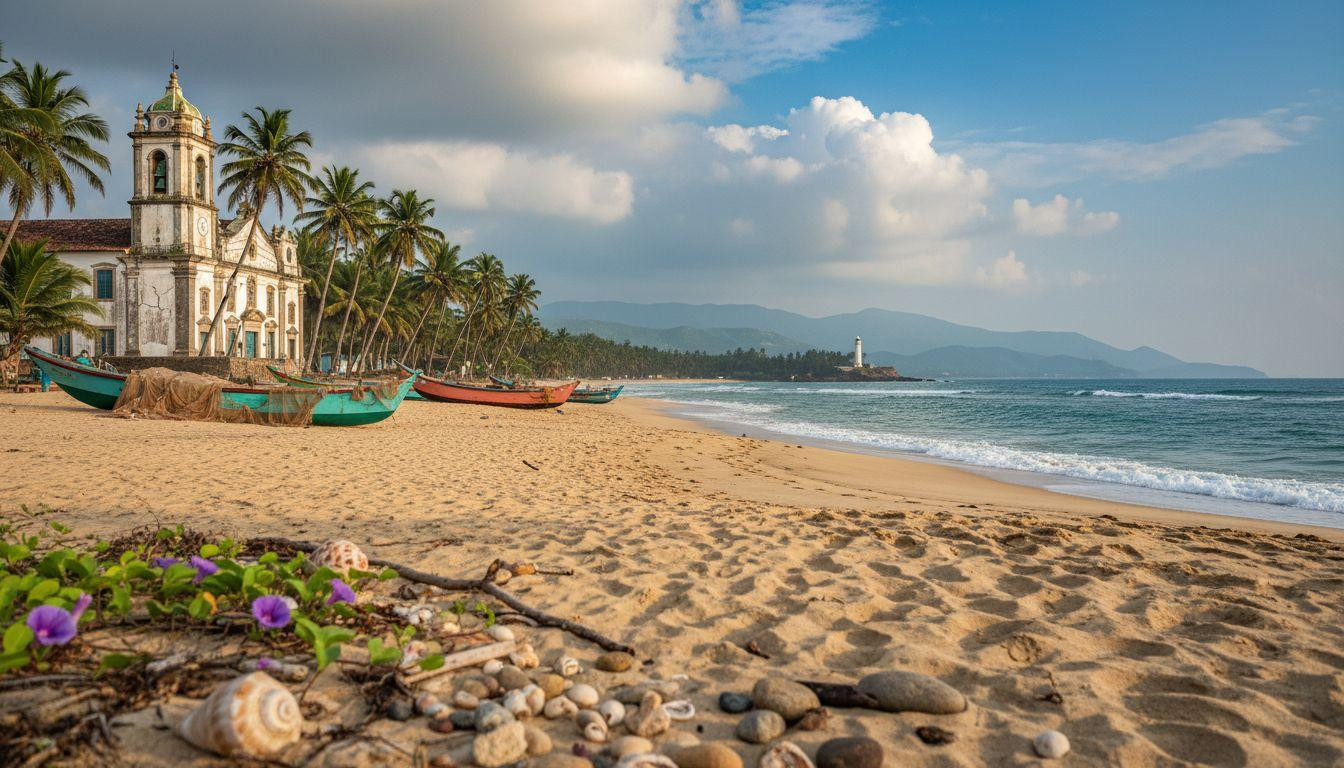Bali’s beaches shimmer with the same turquoise promise they’ve held for decades. But behind those Instagram-perfect rice terraces, a different story unfolds. Traffic clogs Ubud’s once-peaceful streets, temple entry fees climb yearly, and finding authentic local culture requires navigating through crowds of influencers. Meanwhile, 4,700 miles northwest, Goa offers the same tropical paradise experience for half the cost, with 451 years of Portuguese heritage creating architectural drama Bali simply cannot match.
Why Bali has lost its magic
The numbers tell Bali’s overtourism story clearly. Six million visitors descend annually onto just 2,200 square miles of island. Ubud’s famous Monkey Forest Road now crawls with scooter traffic at speeds averaging 3 miles per hour during peak season.
Hotel prices reflect this demand surge. Budget accommodations that cost $15 nightly in 2020 now command $30-50. Temple visits require $5-7 entry fees, up from $2 just three years ago.
The authentic Balinese experience exists, but finding it means traveling 25 miles from popular areas. Rice terrace sunrise tours start at 4 AM to beat crowds that arrive by 7 AM. Even remote beaches like Nusa Penida see 2,000 daily visitors during high season.
Meet Goa: Portugal meets tropical paradise
The landscape that Bali cannot replicate
Goa’s 65-mile coastline stretches between the Western Ghats mountains and Arabian Sea. Portuguese colonial churches rise from coconut palm groves, creating a European-meets-Asian aesthetic absent in Bali’s Hindu temple architecture.
The backwaters of nearby Kerala complement Goa’s beaches perfectly. Dudhsagar Waterfalls cascade 1,017 feet through jungle canopy. Fort Aguada’s 17th-century lighthouse commands panoramic ocean views.
The Portuguese heritage advantage
Old Goa’s UNESCO World Heritage churches showcase Baroque architecture on an Asian scale. Se Cathedral, completed in 1619, ranks among Asia’s largest churches. Its bell tower houses the Golden Bell, heard 8 miles away.
Fontainhas quarter in Panaji displays colorful Portuguese mansions with distinctive azulejo tiles. Narrow streets wind past wrought-iron balconies and red-tiled roofs. Local Konkani language incorporates Portuguese words like “meza” (table) and “janela” (window), creating linguistic fusion Bali lacks.
The authentic Goan experience
Activities that deliver without crowds
Palolem Beach curves 1 mile in a perfect crescent, accommodating 300-400 daily visitors versus Bali’s Kuta Beach hosting 3,000. Dolphin spotting trips depart at sunrise for $12 per person. Water sports cost 50% less than Bali equivalents.
Spice plantation tours at Sahakari offer hands-on experiences for $8-12. Guides demonstrate cardamom harvesting while explaining traditional Goan cooking techniques. Thailand’s Railay Beach offers similar limestone scenery, but Goa adds cultural depth.
Portuguese-Indian fusion cuisine
Vindaloo originated from Portuguese “vinha d’alhos” (wine and garlic marinade). Fish curry rice costs $3-4 at beachside shacks. Bebinca, Goa’s 16-layer dessert, requires 4 hours preparation using coconut milk and palm jaggery.
Cashew feni, distilled from cashew apples, offers unique tasting experiences. Local breweries like Kings Beer complement seafood perfectly. Restaurant meals average $5-8 versus Bali’s $8-12.
November timing creates perfect conditions
November marks Goa’s dry season beginning while Bali’s ends in October. Post-monsoon clarity creates exceptional underwater visibility for snorkeling. Water temperatures reach perfect 81-84°F ranges.
Accommodation prices drop 30% from peak season rates. North Goa guesthouses charge $15-25 nightly in November versus $25-40 during December-February. Macau’s Portuguese heritage offers similar colonial architecture, but Goa provides beach paradise combination.
The IFFI International Film Festival runs throughout November 2025. Goa Carnival preparations begin, creating festive atmosphere without peak-season chaos. Morning temperatures average 77°F, perfect for exploring Old Goa churches before afternoon beach time.
Your questions about Goa versus Bali answered
How do daily costs actually compare between destinations?
Goa accommodation averages $20-35 nightly versus Bali’s $35-60. Meal costs run $3-6 compared to Bali’s $5-9. Scooter rentals cost $5-7 daily in Goa, $8-12 in Bali. Total daily budgets range $40-60 in Goa versus $65-90 in Bali, creating 35% savings.
What cultural experiences distinguish Goa from typical beach destinations?
Portuguese churches showcase European architecture in tropical settings. Local families celebrate both Christmas and Ganesh Chaturthi, creating unique religious fusion. Konkani language blends Indian and Portuguese influences. Traditional Fugdi dances occur during festivals. Budget-friendly alternatives elsewhere lack this historical depth.
Which destination offers better value for American travelers?
Goa flights from major US cities cost $800-1,400 versus Bali’s $1,200-2,000. Goa requires fewer connection flights. English proficiency exceeds 85% in tourism areas. Medical facilities include modern hospitals. Tourist infrastructure matches international standards while maintaining authentic local character.
Dawn breaks over Palolem Beach as fishing boats return with silver catches gleaming in morning light. The lighthouse at Fort Aguada begins its daily rest while church bells echo across red-tiled roofs. This is Goa’s quiet magic, waiting for travelers smart enough to choose authenticity over crowds.
